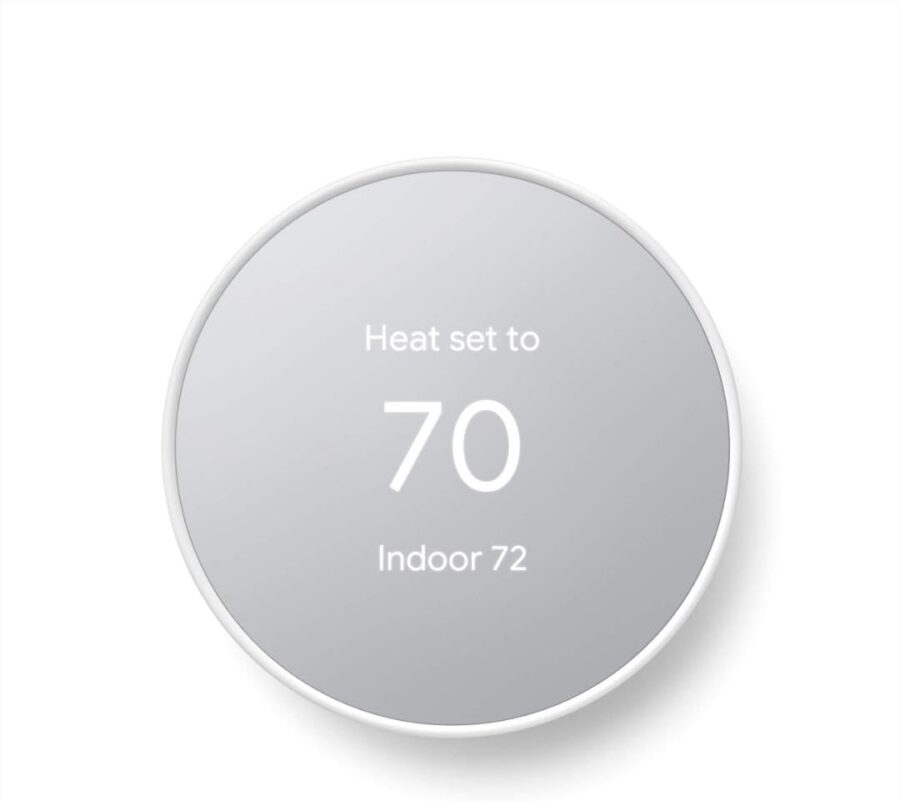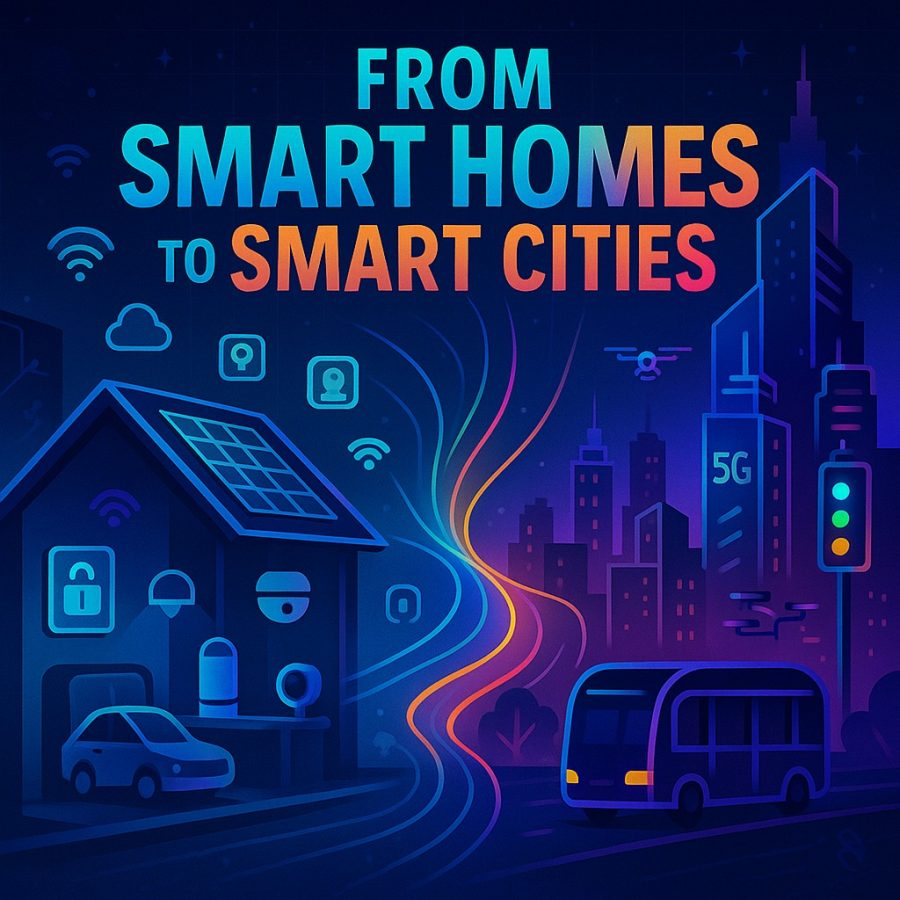Views: 0
When the first smart thermostats hit the market, most people thought of convenience. Adjusting the heat with a tap on your phone felt revolutionary. Then came smart speakers, connected fridges, and doorbell cameras that could send you a live feed of the mail carrier.
That was the beginning of a digital lifestyle built on artificial intelligence. Today, the conversation has shifted from individual homes to entire communities.
This From Smart Homes to Smart Cities: AI’s Next Frontier article will explore how AI is scaling up from cozy living rooms to sprawling city blocks, transforming how we live, commute, work, and connect.
The journey from smart homes to smart cities is not just about bigger gadgets or flashier apps. It is about integrating AI into infrastructure, governance, energy management, and daily services.
All of which are used to create environments that are not only more efficient but also more sustainable and livable. We will uncover how this shift is happening, what benefits it offers, and what challenges stand in the way.
The Foundation: Smart Homes as the Building Blocks
Before imagining AI-powered cities, it is worth looking at the progress in smart homes.
Everyday AI Integration
- Voice Assistants: Amazon Alexa, Google Assistant, and Apple Siri control lights, music, and appliances.
- Smart Appliances: Refrigerators suggest recipes, washing machines run during off-peak hours, and ovens adjust cook times automatically.
- Security Systems: AI cameras detect unfamiliar faces and alert homeowners instantly.
These technologies not only add convenience but also create a foundation for larger AI-driven networks. When thousands of connected homes feed data into a shared system, cities gain insights into energy use, traffic, and community needs.
Lessons Learned
Smart homes also highlight challenges—privacy, compatibility, and security risks. These issues only multiply at the scale of a city, making them central to From Smart Homes to Smart Cities: AI’s Next Frontier.

Google Nest Thermostat – Smart Thermostat for Home – Programmable Wifi Thermostat – Snow
What Makes a City “Smart”?
A smart city is not just filled with gadgets. It is an ecosystem where AI and data analytics optimize core functions like transportation, energy distribution, waste management, and safety.
Core Components
- Smart Infrastructure: Roads with embedded sensors, buildings that adjust energy consumption.
- AI Transportation: Autonomous buses, AI traffic lights, predictive maintenance for trains.
- Energy Systems: AI grids balancing renewable sources and traditional power.
- Public Safety: AI-powered surveillance and predictive policing.
- Citizen Services: Digital government portals, healthcare monitoring, and AI-assisted city planning.
The leap from smart homes to smart cities is essentially the leap from individual convenience to collective efficiency.
AI in Transportation: Moving People Smarter
If you want to see AI’s impact, look no further than traffic.
Smarter Traffic Management
Traditional traffic lights operate on timers. AI-controlled lights adapt dynamically, easing congestion and reducing emissions.
Autonomous Vehicles
Self-driving taxis and buses already operate in pilot programs. They rely on AI for navigation, obstacle detection, and coordination with city infrastructure.
Predictive Analytics
AI analyzes historical and real-time data to forecast traffic surges, rerouting commuters proactively.
Transportation illustrates the central theme of From Smart Homes to Smart Cities: AI’s Next Frontier—AI creates not just efficiency, but entirely new mobility models.
AI and Energy: Greener Grids
Cities are energy guzzlers, but AI can make them greener.
Smart Grids
AI balances supply and demand by predicting energy peaks. During high demand, grids can redirect power from renewable sources like solar and wind.
Microgrids and Homes
Smart homes with solar panels contribute to the larger grid, with AI orchestrating when households draw power and when they give it back.
Efficiency in Buildings
AI-powered HVAC systems reduce waste by adjusting temperature based on occupancy and weather.
Sustainability is central to AI’s city-scale role. It turns the chaotic sprawl of energy use into an orchestrated symphony.
Healthcare in Smart Cities
AI is not limited to infrastructure. Healthcare also benefits enormously.
- Telemedicine: AI platforms connect patients with doctors quickly, reducing wait times.
- Predictive Health Analytics: Wearables collect data that AI uses to detect early signs of illness.
- Emergency Response: AI routes ambulances using real-time traffic predictions.
From smart homes to smart cities, healthcare illustrates how personal devices feed into public health management.
AI and Public Safety
Safety is a cornerstone of smart cities, but it is also the most controversial.
Surveillance
Cameras equipped with AI can detect suspicious activity, track movement, and alert authorities instantly.
Disaster Response
AI predicts flood zones, tracks wildfires, and coordinates evacuations with precision.
Predictive Policing
AI analyzes crime patterns to allocate resources where they are most needed. While effective, it raises concerns about bias and civil liberties.
In the discussion of From Smart Homes to Smart Cities: AI’s Next Frontier, public safety highlights both promise and peril.
Waste and Water Management
Unseen but critical, AI makes waste collection and water usage smarter.
- Smart Bins: Sensors signal when trash bins are full, optimizing collection routes.
- Water Monitoring: AI detects leaks or contamination early.
- Recycling Automation: AI systems sort recyclables faster and more accurately than humans.
These efficiencies reduce costs and environmental impact while improving quality of life.
Governance and Citizen Engagement
AI’s role in governance is transformative.
- Digital Services: Citizens renew licenses, pay taxes, or request services online, guided by AI chatbots.
- Feedback Loops: AI analyzes citizen feedback from apps or social media to identify concerns quickly.
- Urban Planning: AI models simulate new developments, forecasting traffic or environmental impact before projects start.
Smart cities are not just about efficiency; they are about giving citizens more direct influence.
AI in Education
AI transforms education at the city scale by enabling personalized learning in schools.
- Adaptive Platforms: Adjust lessons to each student’s pace.
- Resource Allocation: AI predicts which schools need more support or teachers.
- Skill Forecasting: Cities use AI to align education with local job markets.
This ensures that smart cities also build smarter citizens.
The Ethical and Privacy Challenges
AI at the city level magnifies ethical dilemmas.
- Surveillance vs Privacy: Smart cameras and sensors risk creating constant monitoring.
- Bias in Algorithms: Predictive systems can reinforce inequality if data is flawed.
- Digital Divide: Not all citizens have equal access to AI-powered services.
The success of From Smart Homes to Smart Cities: AI’s Next Frontier depends on transparency, accountability, and inclusivity.
Case Studies: Smart Cities in Action
Singapore
Known for its Smart Nation initiative, Singapore uses AI in traffic, healthcare, and public safety, setting global benchmarks.
Barcelona
AI-powered waste management and energy grids make Barcelona a sustainability leader.
Dubai
Ambitious plans integrate AI into transportation, policing, and governance.
Each case shows that smart cities are not a distant future—they are here, in varying forms, already.

Amazon Echo Pop (newest model), Our smallest Alexa speaker, Fits in any room, Charcoal
How Smart Homes Feed Smart Cities
The transition from smart homes to smart cities is not a leap but a gradual build.
- Data Flow: Household devices feed data into municipal systems.
- Collective Efficiency: Thousands of thermostats adjusting usage help stabilize grids.
- Citizen Buy-In: People who adopt smart home tech are more likely to accept smart city services.
Smart homes are the test lab, and cities are the final product.
The Future: AI’s Next Frontier
Looking ahead, expect even deeper integration.
- Fully Autonomous Transit: Driverless buses and drones for deliveries.
- AI-Designed Cities: Urban planning driven entirely by simulations.
- Augmented Reality Interfaces: Citizens interacting with city services through AR glasses.
- Climate-Resilient Systems: AI predicting and adapting to climate impacts.
The city of the future will be less about concrete and more about code.
Pros and Cons of AI in Smart Cities
| Pros | Cons |
| Efficient services and cost savings | Privacy invasion |
| Reduced traffic and emissions | Risk of algorithmic bias |
| Better healthcare and safety | Dependence on constant connectivity |
| Sustainability and energy savings | Digital divide among citizens |
| Enhanced citizen engagement | Cybersecurity threats |
](https://altpenguin.com/wp-content/uploads/2025/08/veed-ad.webp)
Conclusion
So, From Smart Homes to Smart Cities: AI’s Next Frontier is not just a catchy phrase. It describes a real transformation underway. AI is moving beyond living rooms and kitchens into traffic systems, power grids, hospitals, and government services. The results promise efficiency, sustainability, and convenience on a scale never seen before.
Yet, challenges remain. Privacy, inclusivity, and transparency will determine whether smart cities feel like utopias or digital surveillance states. The journey from smart homes to smart cities is inevitable, but how we guide AI’s role will shape whether these cities serve all citizens fairly.
The future is clear: as homes get smarter, so do neighborhoods, and eventually entire cities. The next frontier of AI is not just about controlling your thermostat—it is about orchestrating the rhythms of modern urban life.




